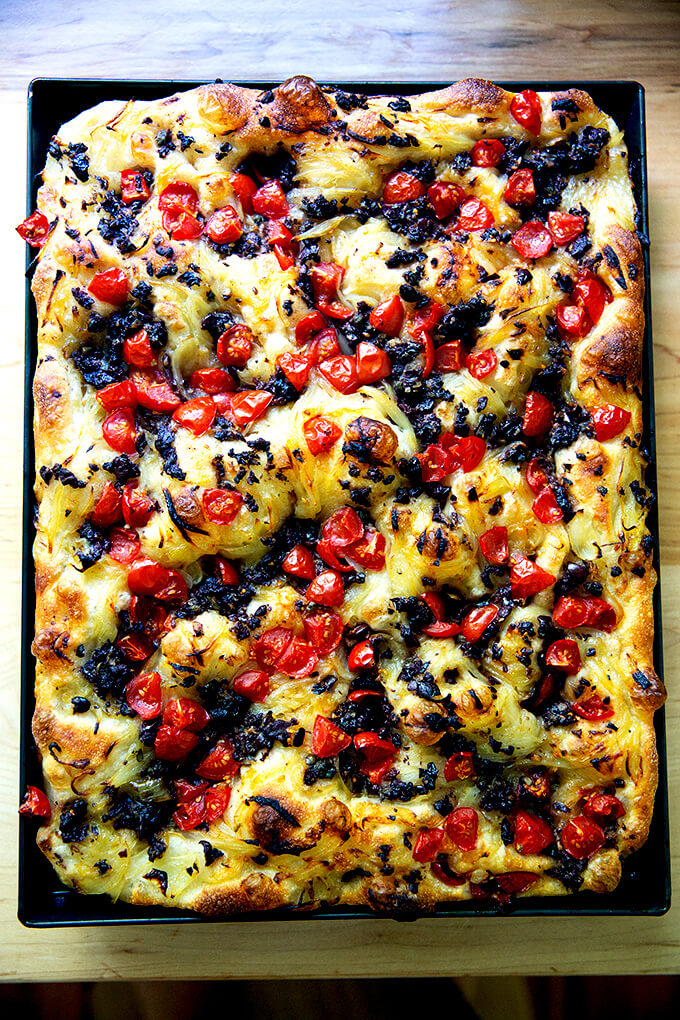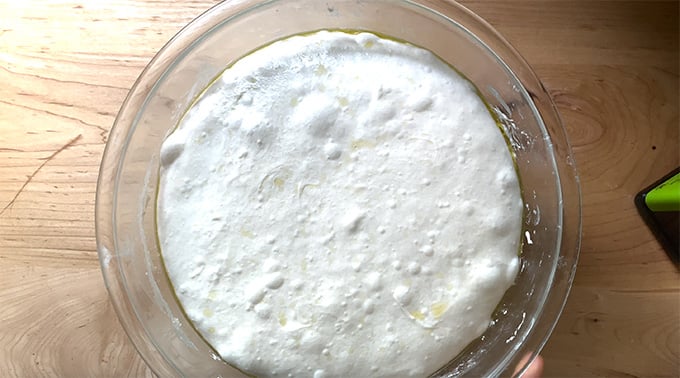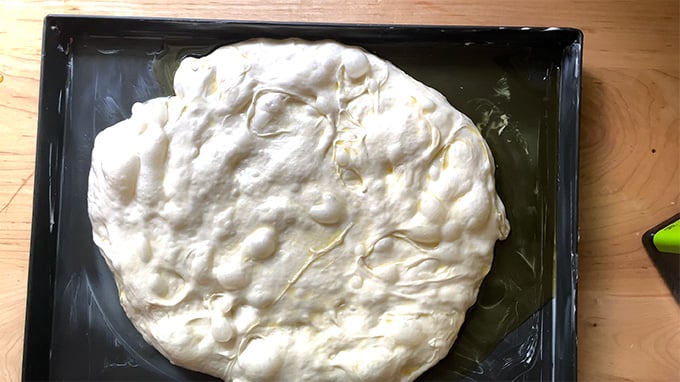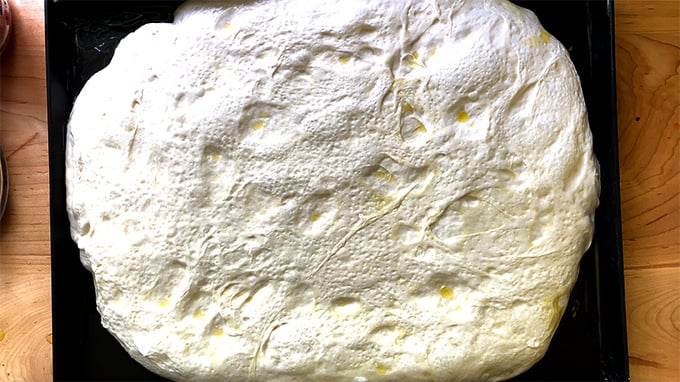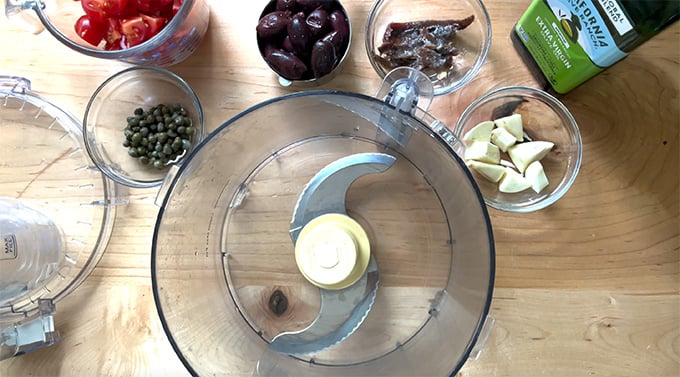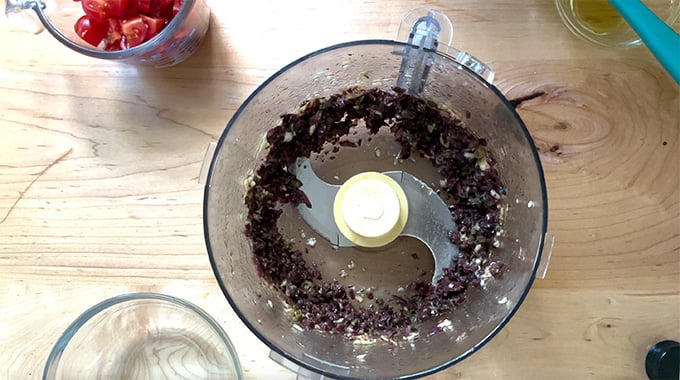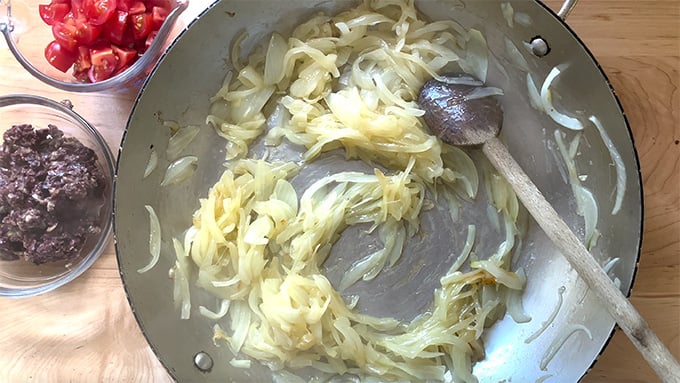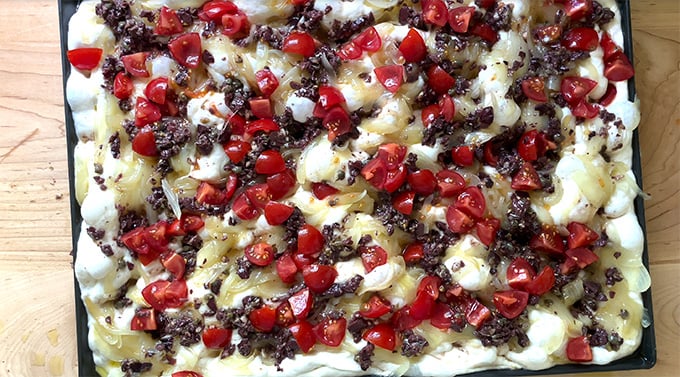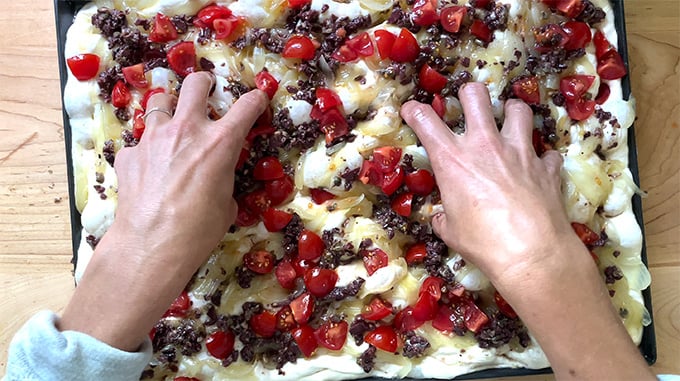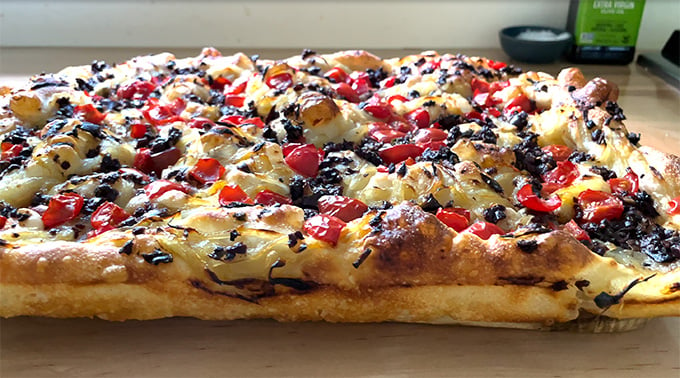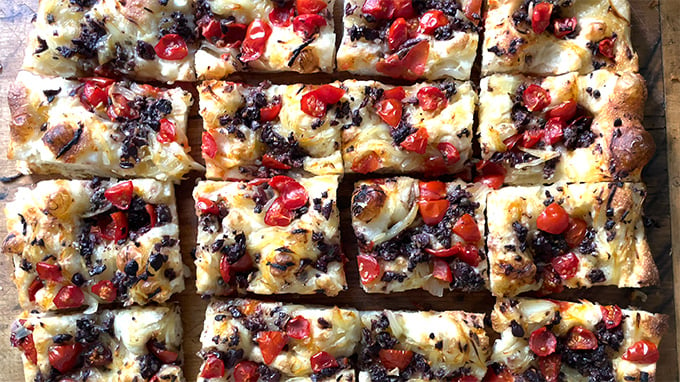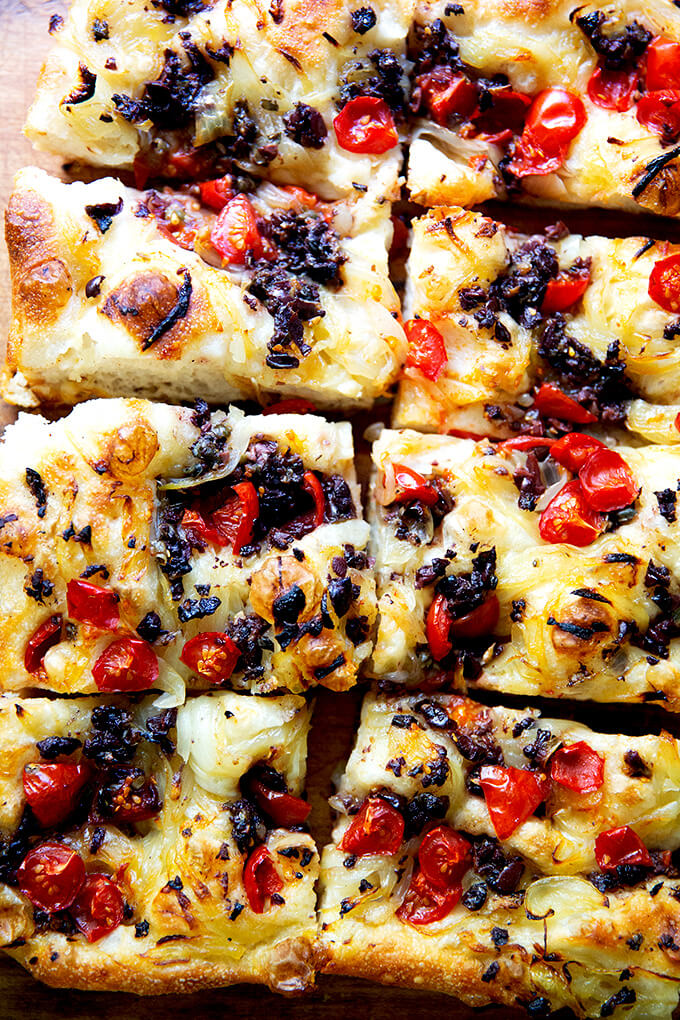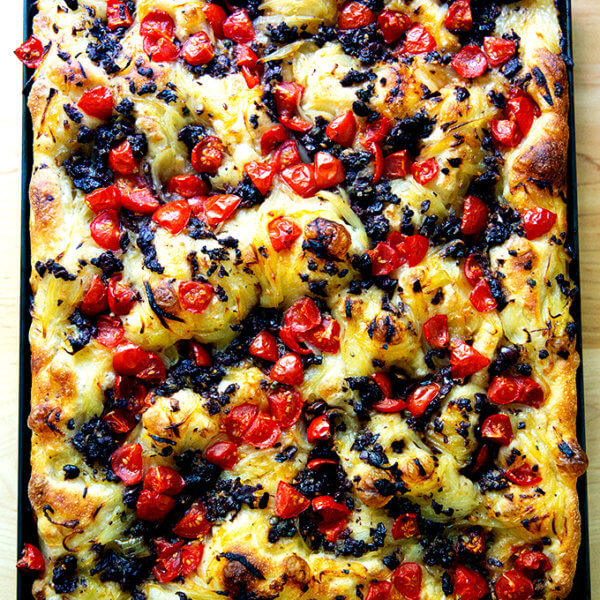Traditionally, atop the blanket of caramelized onions, anchovies are arranged in a crisscross diamond motif with olives either marking the intersection of anchovies or the center of the diamonds they create. I’ve never loved this geometric arrangement and so I make an anchovy and olive (and garlic and caper) paste instead. I like this approach for a few reasons, namely because it more evenly disperses the intense (umami!) flavor across the dough, but also, in some ways, because it disguises it: those who think they dislike anchovies won’t know they’re there. I also have always loved the organic look of toppings scattered all about, though I must admit: the explosion of focaccia art cropping up across the web these past few years had me thinking: Should I revisit the iconic pattern? Is pissaladière the original focaccia garden? It turns out: no! I was shocked to learn from this Saveur article that pissaladière gets its name from pissalat, a pungent anchovy paste. According to the article, pissalat is made by layering baby anchovies and sardines with salt, spices, and herbs, and fermenting the mixture for 45 days. Early versions of pissaladière called for spreading the fish paste over the dough before layering onions over top. Interesting, right? Regardless of how you choose to pissaladière, there are a few key elements to include, which I explore below, but first:
How do you pronounce pissaladière?
Who knows?! Many moons ago, my brother-in-law gave me permission to never worry about saying it correctly when he declared the pizza-like assembly before him: pizza-derriere! I’ve never been able to say it any other way.
Pissaladière: Key Elements
Dough: While some recipes call for puff pastry as a base layer, a yeast-leavened dough, something like focaccia dough, is traditional. In the video above and below, I use a sourdough focaccia. Caramelized Onions: This recipe calls for 3 cups of raw, sliced onions, which you’ll cook down slowly but not to their complete caramelized state — the final caramelization will take place in the oven. Anchovies: There was a period when I purchased large tins of anchovies packed in salt, which I then soaked before using. No more. I love the tins of oil-packed Cento anchovies, available pretty widely. Olives: I typically use kalamata olives because I always have them on hand, but Niçoise olives or those wrinkly black olives work well, too. (Optional: capers and garlic): I add these to the purée of anchovies and olives — you essentially make a tapenade; then spread it across the dough. (Optional: tomatoes): As noted above, I love adding tomatoes to pissaladière mostly because in the late summer and early fall, the time of year I really want to make pissaladière, tomatoes are abounding.
How to Make Pissaladière, Step by Step
First, make focaccia dough, whichever recipe you prefer until it completes its bulk fermentation. Pictured below is sourdough focaccia, but most often I make this yeast-leavened focaccia: Transfer the dough to a buttered + olive oiled pan. If you are certain your dough will not stick to the pan you are using, you can get away with olive oil alone, but if there is any question, butter the pan first — it will ensure your dough will release without issue. Let the dough rise for 3 to 5 hours or until it looks like … … this. In the meantime, gather your ingredients for the topping: garlic, anchovies, olives, capers, olive oil, tomatoes, and onions. Make a coarse purée with the olives, garlic, capers, anchovies, and olive oil. Sauté the onions until lightly golden, about 15-20 minutes over medium to low heat. Then layer the toppings over the dough as follows: onions, olive purée, tomatoes. Dimple one last time; them transfer to the oven immediately. Bake until evenly golden, about 25 minutes. Cut into squares; serve warm or at room temperature. 5 from 15 reviews The pan: Any standard sized half sheet pan will work here. My recent interest in Detroit-style pizza led me to discover this Lloyd “Gramma” style pan, which I am loving.
